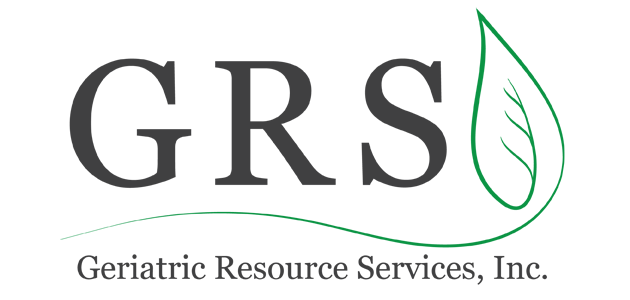Aging Well in the Upstate
Helpful tips for family caregivers
November/December 2011
‘Tis a busy season. Lots to look out for:
Get help changing Medicare plans
If you are dissatisfied with your relative’s current Medicare coverage, it’s time to get into action! Changes are possible only once a year. This year, the annual open enrollment period starts and ends EARLIER than before: October 15 to December 7.
Here’s a quick review of the parts of Medicare:
“Original Medicare”
- Part A covers inpatient time at a hospital (part of Social Security).
- Part B covers doctor visits and other outpatient care (part of Social Security).
- Part D covers medications (offered by private insurance companies).
Additional options are available through private companies
- Advantage plans (sometimes called “Part C”) are Medicare-approved plans. They generally combine Parts A, B, & D into one package. They often include extra services.
- “Medigap” plans supplement Original Medicare. They pay for the 20% Medicare doesn’t cover.
During open enrollment, your relative can change
- from an Original plan to an Advantage plan, or vice versa
- to a new Part D plan. A different plan or company may provide the drugs your relative needs at lower cost
- to a new Advantage plan
Help is available for comparing options:
- State Health Insurance Assistance Program (SHIP). Get personal assistance at no cost. Every state has a program that trains volunteer counselors. They know the details about Medicare and provide help by phone or in person.
- Medicare.gov. Create a free account for your relative. You can then view information about your relative’s current coverage. And compare it to other health and drug plans.
Or call for assistance at 1-800-MEDICARE. Check the newspaper or senior center for local counseling on health insurance.
Remember, the deadline for changing is December 7.
Return to top
Is your home safe for older guests?
 If you expect older visitors this season, check your home for hazards. Older adults often have impaired balance and vision. This makes them prone to falling, especially in new surroundings. And fragile skin and bones can mean double trouble if someone does take a spill. Here are some tips:
If you expect older visitors this season, check your home for hazards. Older adults often have impaired balance and vision. This makes them prone to falling, especially in new surroundings. And fragile skin and bones can mean double trouble if someone does take a spill. Here are some tips:
Home entry
Early darkness and wet walkways can add to risk of a fall. Turn on outdoor lighting and make sure stairs have a sturdy handrail.
Living/dining areas
- Clear the floor! Store away toys, piles of books. Avoid slippery wax floor finishes and tape down area rugs.
- Eliminate extension cords from walking areas.
- Be mindful of fire hazards. If you’re plugging in an extra heater, place it at least three feet from anything flammable.
- Review seat height. Seating that is low, angled back, or lacks side arms can pose problems for elders. Add a firm cushion to raise the seat.
Indoor stairs
If your guest must use stairs, make sure they are well lit, without glare or strong shadows. Consider night-lights, and point out where light switches can be found.
Bedroom
- Install night-lights to light the path to the bathroom. Also provide an easy-to-reach bedside lamp.
- Check bed height. If it’s too high, provide a platform step. If too low, add risers. (These are sturdy plastic “cups” that raise each leg of a bed. Also useful for couch or chairs.)
Bathroom/kitchen
- Clear the floor! Remove throw rugs. Ensure pet bowls and toys aren’t underfoot.
- Avoid scald burns. Put red electrical tape on hot water knobs as a reminder to take caution. (Turning the water heater down is no longer recommended because bacteria can breed at lower temperatures.)
- Prevent slipping by placing a large, nonskid mat in tub or shower. A shower chair makes for a safer shower. Check the thrift store or borrow a neighbor’s.
Urinary tract infections
It’s healthy to have bacteria in your digestive tract and on your skin. But when bacteria enter the bladder and kidneys, there can be problems. Urinary tract infections (UTIs) are the reason for 8 million doctor visits every year.
Who is at risk?
UTIs affect mainly women, but they occur in older men, too. Seniors are especially vulnerable because of
- decline in muscle strength around the bladder. This interferes with effective emptying of the bladder. Bacteria can then grow in the pooled urine.
- weakened immune system. Aging itself reduces the body’s ability to fight infection. Some diseases, such as diabetes, make the situation worse.
- poor bladder or bowel control. Soiled pads and diapers give bacteria prolonged opportunity to enter the urinary tract.
- lack of estrogen (for women). Estrogen may help ensure that bacteria do not stick to the walls of the urinary tract and vagina.
- enlarged prostate in men. An enlarged prostate creates further difficulty emptying the bladder completely.
- neurological disease. Conditions such as Alzheimer’s and Parkinson’s also make it hard to completely empty the bladder.
Symptoms and treatment
Even if your loved one doesn’t have any symptoms, he or she may have an infection, which is diagnosed by finding bacteria in a urine sample. Common symptoms include
- more frequent urge to urinate. But producing very little urine.
- general fatigue. Feeling “not your usual self.”
- pain or burning when urinating.
- cloudy or bloody urine. Or urine with a strong odor.
- increased confusion. For adults with memory problems, a sudden worsening of symptoms.
Oral antibiotics are commonly given. Studies suggest it is best to use an antibiotic that targets the specific type of bacteria found in the urine, rather than a “broad spectrum” drug.
Next month we’ll talk about ways to prevent urinary tract infections.
Return to top

